CES 2013: Nvidia Announces Project Shield And Tegra 4
We're about to head out to the 2013 International Consumer Electronics Show. But before we leave, we wanted to take a moment to publish our thoughts about Nvidia's press conference, as its webcast happens. Tune in for our team's commentary.
8:24: Here we go!
8:29: Jen-Hsun Huang comparing PC gaming and console gaming. PCs give us more flexibility to increase quality versus consoles. Yup, we know. That's why we love PC gaming!
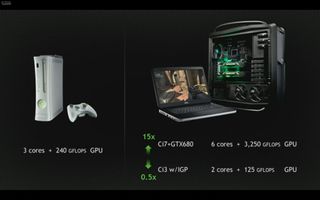
8:33: Introducing GeForce Experience. Didn't we hear about this back when the GeForce GTX 690 launched? Nvidia will pick the best settings for your game based on your configuration.
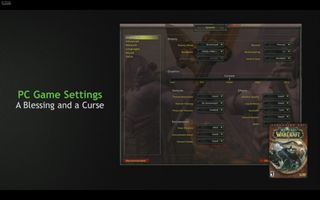
8:37: Great-looking demo, if you didn't know how to change your settings previously.


8:41: Onto a discussion of the relationship between 3D graphics and cloud computing. Wonder what's coming?

8:44: Introducing the Nvidia Grid, a server designed for computer graphics, "packed full of GPUs." One rack = 20 servers, 240 GPUs, 200 TFLOPS of computer performance (or about 700 Xbox 360s).

8:47: Andrew Fear loading up Trine 2 on an LG TV over the cloud. Grid receiver client was ported to the TV by LG. You plug in Ethernet to the television and you're able to access the game library online.
Stay on the Cutting Edge
Join the experts who read Tom's Hardware for the inside track on enthusiast PC tech news — and have for over 25 years. We'll send breaking news and in-depth reviews of CPUs, GPUs, AI, maker hardware and more straight to your inbox.

8:49: Now they're up and running on an Android-based tablet. Same thing; you fire up the client and go. Andrew starts right where he left off on the TV (same save state).
8:54: Still waiting for the big announcement. Tegra 2. Tegra 3...
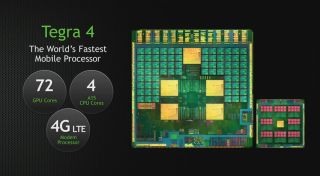
8:57: Tegra 4. Four ARM Cortex-A15 cores, 72 GPU cores, Nvidia's first 4G LTE modem processor. This is still a 4-PLUS-1 design.
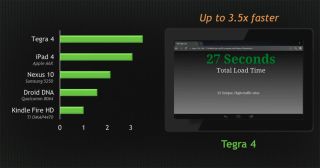
8:58: Demo time. Nexus 10 versus a Tegra 4-based prototype; 50 seconds on the Nexus, and 27 on the Tegra 4-based tablet to load 25 webpages.

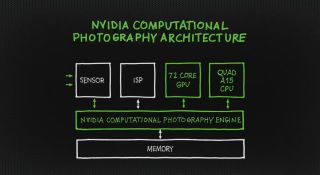
9:05: High dynamic range imaging demonstration. Tegra 4 is going to allow two shots to be taken back-to-back. The cores then work in parallel to create the HDR image without the delay typically associated with taking pictures with HDR turned on.
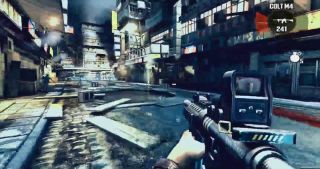
9:18: On to video games. Dead Trigger 2. Interesting, but not necessarily mind-blowing. Chris Angelini: "That's still not the big announcement, by the way."
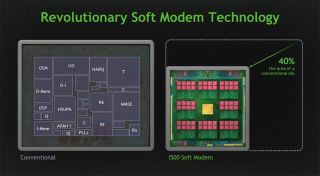
9:23: Software-defined radio introduction. Remember seeing the 4G LTE on Tegra 4? i500 Soft Modem from the engineers Nvidia acquired from Icera. 1.2 sustained trillion operations per second across eight programmable processors. Able to re-use the programmable logic for each stage of the pipeline, eliminating the need for fixed-function hardware. So, it's smaller. We're wondering how that's going to affect battery life, though. The benefit of fixed-function circuitry is often a reduction in power consumption; how will the programmable cores change this?
9:29: Chris Angelini: "Here it comes..."
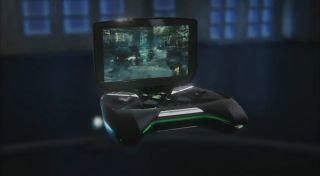
9:32: Nvidia handheld, Project Shield. Project Thor is, er, something else ;-)
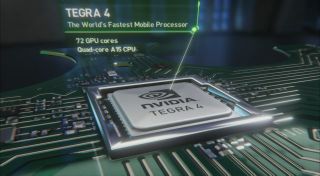
Tegra 4-powered (look at that huge heat sink), 38 Wh of batteries for between five and 10 hours of gameplay, according to Jen-Hsun. Apparently, 24 hours of high-def video playback. Bass-reflex audio system through tuned port. Better audio than an HP laptop with Beats. Console-oriented game controls. Runs Android. HDMI output, micro-USB, microSD slot, 3.5mm audio output. Top cover can be customized.

What about that display? Tell us more!

Touch-based control. Looks like Nvidia's alternative to a tablet, better-oriented to gaming.
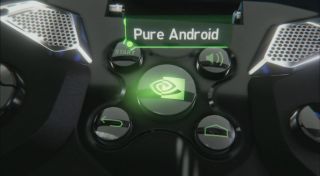
9:45: Jen-Hsun continues demoing the Shield. 4K video playback over HDMI to a TV. Then, driving a 4K display in a 3D application from Shield (assuming that's scaled from 720p?). Multi-player capable over the network.

9:59: After some (many) technical difficulties, Jason and Jen-Hsun have a demo running of Need for Speed streaming from a PC (Chris: "Hey, nice Tiki"), using GeForce Experience, to the Shield. We're looking forward to getting a feel for the control lag incurred by this.
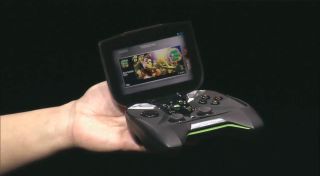
10:04: It looks easy to connect to your Steam-based games through Shield and play through your (presumably) high-end PC. Nice to be able to work around the limitations of an ARM-based device to enjoy PC games on a handheld.
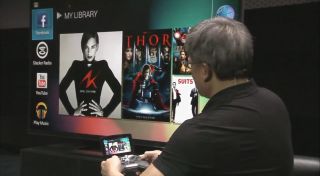
What's happening here is that the PC's hardware is responsible for rendering the 3D content, which is then sent to the Shield. What will the network bandwidth requirements be for this? Will gamers be interested in using a controller for titles they're used to playing with a keyboard and mouse? How do the graphics look on the streamed content?

We'll be answering all of this and more sooner than you think. Stay tuned to Tom's Hardware for more CES 2013 coverage than you've ever seen us do!
-
JOSHSKORN Am I suppose to sit on this article and refresh every few minutes for updates to it?Reply -
amoralman I have a feeling NVidia will drop R&D and go full blown mainstream (a.k.a. console...) omg this will suck please don't be that please please pleaseReply -
cangelini JOSHSKORNAm I suppose to sit on this article and refresh every few minutes for updates to it?You certainly don't have to :) Working with the site's technology as best as possible.Reply -
toxxel ultamecaI mean it's only 2013 and we still can't just watch keynotes in HD WTF!Reply
You can at http://www.twitch.tv/nvidia
Most Popular



